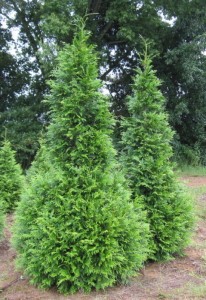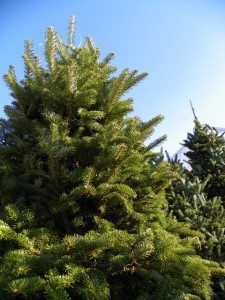Caring for Living and Live Cut Christmas Trees
go.ncsu.edu/readext?255969
en Español / em Português
El inglés es el idioma de control de esta página. En la medida en que haya algún conflicto entre la traducción al inglés y la traducción, el inglés prevalece.
Al hacer clic en el enlace de traducción se activa un servicio de traducción gratuito para convertir la página al español. Al igual que con cualquier traducción por Internet, la conversión no es sensible al contexto y puede que no traduzca el texto en su significado original. NC State Extension no garantiza la exactitud del texto traducido. Por favor, tenga en cuenta que algunas aplicaciones y/o servicios pueden no funcionar como se espera cuando se traducen.
Português
Inglês é o idioma de controle desta página. Na medida que haja algum conflito entre o texto original em Inglês e a tradução, o Inglês prevalece.
Ao clicar no link de tradução, um serviço gratuito de tradução será ativado para converter a página para o Português. Como em qualquer tradução pela internet, a conversão não é sensivel ao contexto e pode não ocorrer a tradução para o significado orginal. O serviço de Extensão da Carolina do Norte (NC State Extension) não garante a exatidão do texto traduzido. Por favor, observe que algumas funções ou serviços podem não funcionar como esperado após a tradução.
English
English is the controlling language of this page. To the extent there is any conflict between the English text and the translation, English controls.
Clicking on the translation link activates a free translation service to convert the page to Spanish. As with any Internet translation, the conversion is not context-sensitive and may not translate the text to its original meaning. NC State Extension does not guarantee the accuracy of the translated text. Please note that some applications and/or services may not function as expected when translated.
Collapse ▲Ready or not, Christmas is on the way. Keep the holidays real this year and support North Carolina farmers by purchasing a locally grown living or live cut Christmas tree. Which is best for you will depend on how long you wish to keep the tree inside and whether you have somewhere to plant it outdoors after the holidays. Keep the following tips in mind as you untangle the lights, haul out the ornaments, and head to your local garden center or tree farm.
Live Cut Trees
As the name implies, live cut trees are real trees that are cut from their roots, brought indoors for the holidays, and can then be chipped for mulch or composted after the presents are opened (for more recycling options, read this 2012 PG article: //pender.ces.ncsu.edu/2013/12/how-you-can-recycle-your-christmas-tree/). Live cut trees are your best choice if you want to keep your tree up for several weeks and don’t want the hassle of planting it after the holidays.
If you crave the full experience of choosing and cutting your own tree, seek out a local tree farm. This can be a little more challenging in the coastal plain than in the piedmont or mountains, but there are a few around. Directories of growers can be found online on the NC Eastern Christmas Tree Growers Association website, www.nc-chooseandcut.com, as well as the NC Department of Agriculture’s NC Farm Fresh website, http://www.ncfarmfresh.com.
Traditional Christmas tree species like Fraser fir and spruce are not grown at local tree farms. These species require cooler weather and are more commonly grown in the mountains. Species you are likely to find at eastern NC farms include Leyland cypress, red cedar, white pine, Virginia pine, and Thuja ‘Green Giant’, all of which make beautiful trees when decorated.
If you prefer Fraser fir, there are plenty of local places you can purchase NC Mountain grown trees. Look for a tree with good color and few brown needles. Check the needles for freshness by bending a few. The needles of freshly cut trees will break crisply when bent, while the needles of older trees will feel rubbery. Don’t worry about cracks in the base of the trunk. While these may look damaging, cracks in the trunk do not have a significant effect on tree quality or durability.
Pre-cut trees will need to have the bottom inch of the trunk cut off before being placed in a tree stand to ensure they can absorb water. Be sure to use a tree stand that can hold at least a gallon of water and add new water each day. Clean water is all that is needed to keep trees fresh. Additives, such as aspirin, sugar, cola, or commercial floral enhancers are not necessary and can even reduce tree quality.
Living Trees

Thuja ‘Green Giant’ can be purchased as a live cut as well as container grown living Christmas tree.
Many garden centers offer living trees grown in containers for use as Christmas trees. These trees can be planted outdoors after the holidays. Living trees perform best if they are only kept indoors for a few weeks. Before purchasing a living tree, identify the spot where you will plant it. Take note of the soil conditions (wet or dry) and look up to make sure nothing will interfere with the tree as it grows. Choose a sunny spot since most trees suitable for use as Christmas trees prefer to be in the sun most of the day.
After finding the right place, you need to choose the right plant. For sites with good drainage and sandy soils, consider Chinese juniper. Several varieties are readily available that fit nicely into smaller landscapes. For a moist site, consider Japanese cedar (Cryptomeria japonica) or ‘Green Giant’ Thuja. Both are large evergreen trees with wonderful texture that eventually reach 30’-40’ tall by 15’-20’ wide. Less traditional, but no less beautiful options include hollies and Southern magnolia.
To keep your living tree healthy, place it in a cool, bright spot away from heating vents and out of direct sunlight. Keep it moist but not wet and never allow the container to sit in water. A good way to water these trees without having water run all over the floor is with crushed ice, which melts slowly and soaks into the soil. After Christmas you will need to recondition your tree to the outside climate for a few days before planting it by placing it in a sheltered spot, such as an open garage.
Learn More
Visit your local Cooperative Extension office to learn more about gardening and landscape care. Go to https://www.ces.ncsu.edu/local-
- If you live in Pender County, call 910-259-1235
- In New Hanover County, call 910-798-7660
- In Brunswick County, call 910-253-2610
- In Onslow County, call 910-455-5873
- In Duplin County, call 910-296-2143




